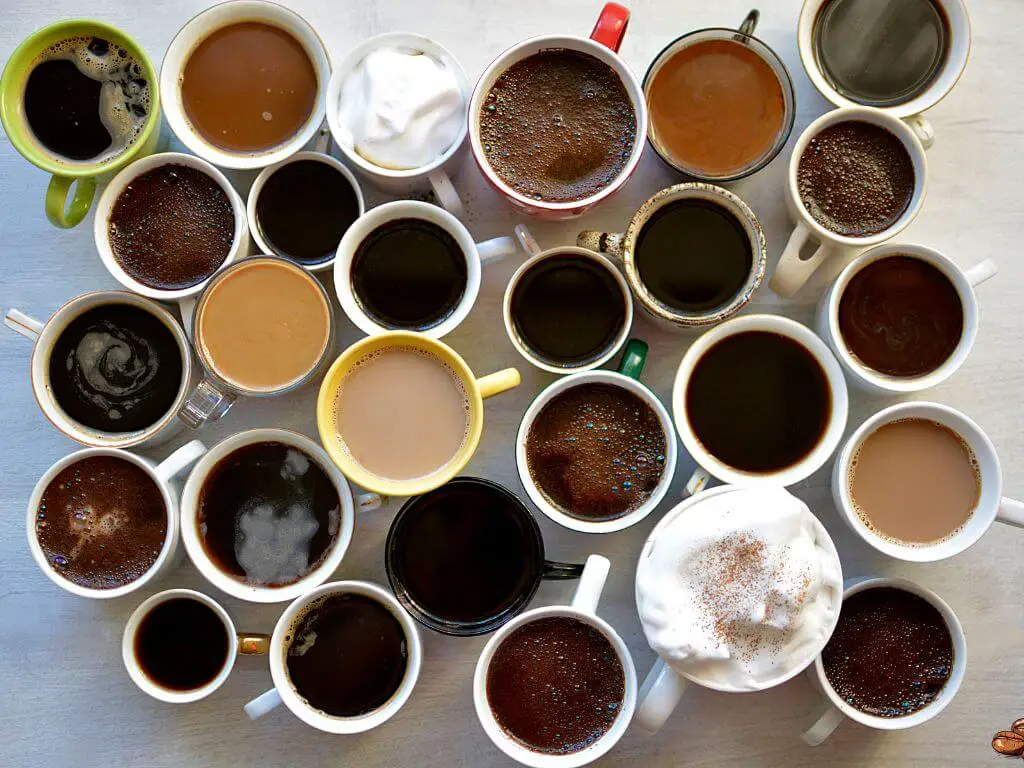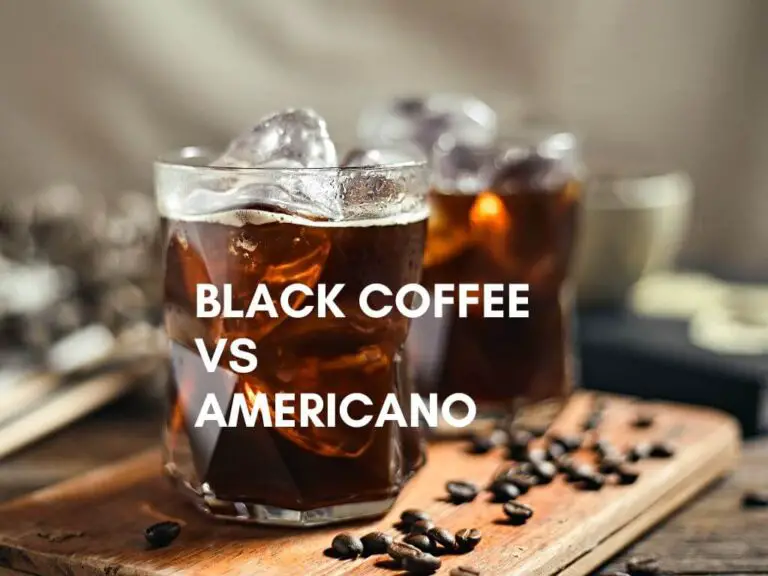Different Types of Coffee: A Comprehensive List for Beginners

Coffee has become an integral part of our daily lives, with countless varieties and brewing methods to explore. As we delve into the world of different types of coffee, we’ll discover a rich tapestry of flavors, aromas, and cultural traditions. From the humble espresso to exotic international specialties, there’s a coffee drink for every taste and occasion.
We’ll start by examining coffee bean varieties and their unique characteristics, then move on to popular espresso-based drinks like cappuccinos and lattes. We’ll also look at non-espresso options such as pour-over and cold brew. Along the way, we’ll explore international coffee specialties and gain insight into coffee roasts and flavors. By the end, you’ll have a comprehensive understanding of the diverse world of coffee.
Coffee Bean Varieties and Their Characteristics
When we talk about different types of coffee, it’s essential to understand the various coffee bean varieties that form the foundation of our favorite brews. Each variety brings its own unique characteristics to the cup, influencing flavor, aroma, and overall coffee experience.
Arabica: The Gourmet Choice
Arabica beans are the most popular and widely consumed coffee variety, accounting for about 60-70% of global coffee production. These beans are known for their smooth, delicate flavors and lower caffeine content compared to other varieties. Arabica plants thrive in high-altitude regions, typically between 3,000 and 6,000 feet above sea level, where cooler temperatures and ample rainfall create ideal growing conditions.
The flavor profile of Arabica coffee is often described as sweet and complex, with notes of fruit, berries, chocolate, and nuts. This variety’s popularity stems from its refined taste and lower acidity, making it a favorite among coffee enthusiasts and casual drinkers alike. However, Arabica plants are more susceptible to diseases and pests, which can make cultivation challenging and contribute to higher prices in the market.
Some popular Arabica varieties include Bourbon, known for its sweet, balanced flavor with caramel and nut undertones, and Typica, which offers a clean, crisp taste with bright acidity and floral notes. These varieties form the basis for many specialty coffees and are prized for their unique flavor profiles.
Robusta: The Caffeine Powerhouse
Robusta beans, scientifically known as Coffea canephora, make up about 40% of the world’s coffee production. These beans are known for their higher caffeine content, which can be nearly double that of Arabica beans. Robusta plants are hardier and more resistant to diseases, allowing them to grow at lower altitudes and in warmer climates.
The flavor profile of Robusta coffee is often described as strong, bold, and somewhat bitter. It has earthy and woody notes, with a peanut-like aftertaste. While Robusta may not be as popular among specialty coffee enthusiasts, it plays a crucial role in the coffee industry. Its higher caffeine content and strong flavor make it an excellent choice for espresso blends, where it contributes to a rich crema and a powerful kick.
Robusta beans are also commonly used in instant coffee production due to their higher solubility and lower cost. Additionally, their natural pest resistance makes them easier to cultivate, which can be advantageous for farmers in certain regions.
Lesser-Known Coffee Bean Types
While Arabica and Robusta dominate the coffee market, there are other intriguing varieties worth exploring. Liberica beans, for instance, are rare and offer a unique flavor profile with woody and smoky notes. Excelsa beans, now classified as a variety of Liberica, contribute a tart, fruity flavor to coffee blends.
For those seeking exceptional and rare coffee experiences, varieties like Geisha (or Gesha) have gained popularity in recent years. Originally from Ethiopia but now primarily grown in Panama, Geisha coffee is celebrated for its floral aroma and jasmine-like notes, often commanding premium prices due to its limited availability and distinctive quality.
As we continue to explore the world of coffee, understanding these different bean varieties can enhance our appreciation for the diverse flavors and characteristics that make each cup unique. Whether you prefer the smooth, nuanced flavors of Arabica or the bold intensity of Robusta, there’s a coffee bean variety to suit every palate.

Popular Espresso-Based Drinks
Espresso-based drinks have become a cornerstone of coffee culture, offering a wide range of flavors and experiences for coffee enthusiasts. Let’s explore some of the most popular espresso-based beverages that you’re likely to encounter in coffee shops around the world.
Pure Espresso Shots
At the heart of all espresso-based drinks is the espresso shot itself. A single shot of espresso typically uses about 7 grams of finely ground coffee, extracted under high pressure to produce a concentrated, flavorful beverage. For those who enjoy a stronger kick, a double shot (doppio) uses twice the amount of coffee and water, resulting in a more intense flavor profile.
For the true espresso aficionados, there’s the ristretto. This “restricted” shot uses the same amount of coffee as a regular espresso but with half the water, creating an even more concentrated and bold flavor. These pure espresso shots serve as the foundation for many other popular coffee drinks.
Milk and Espresso Combinations
The marriage of espresso and steamed milk has given birth to some of the most beloved coffee beverages. The cappuccino, a classic Italian drink, combines equal parts espresso, steamed milk, and milk foam. Traditionally served in a 5 to 6-ounce cup, it offers a perfect balance of coffee strength and creamy texture.
The latte, another favorite, consists of espresso topped with steamed milk and a thin layer of foam. It’s typically larger and milkier than a cappuccino, making it a go-to choice for those who prefer a smoother, less intense coffee experience. The flat white, originating from Australia or New Zealand, is similar to a latte but with a higher coffee-to-milk ratio and very little foam, allowing the espresso flavor to shine through.
For those who want a stronger coffee taste with just a touch of milk, the macchiato is an excellent choice. This drink features a shot of espresso “marked” with a small amount of steamed milk and foam. The cortado, popular in Spain and gaining traction worldwide, offers an equal balance of espresso and steamed milk, typically served in a 4-ounce glass.
Flavored Espresso Beverages
For coffee lovers with a sweet tooth, flavored espresso drinks offer a delightful treat. The mocha combines espresso with steamed milk and chocolate, often topped with whipped cream for extra indulgence. Variations of the mocha might include additional flavors like caramel or peppermint syrup.
The caramel macchiato, despite its name, is quite different from a traditional macchiato. It’s made with vanilla syrup, steamed milk, espresso, and a drizzle of caramel sauce on top. This drink is a perfect example of how espresso-based beverages can be customized to create unique flavor profiles.
For those who prefer their coffee without milk, the Americano is a popular choice. It’s made by adding hot water to espresso, resulting in a drink similar in strength to drip coffee but with the distinct flavor notes of espresso.
As we explore these different types of coffee, it’s clear that espresso-based drinks offer something for every palate. Whether you prefer the pure intensity of a ristretto or the creamy sweetness of a latte, there’s an espresso drink out there for you. Experimenting with these various combinations can lead you to discover your perfect coffee companion.
Non-Espresso Coffee Drinks
While espresso-based drinks are popular, there’s a whole world of non-espresso coffee options to explore. These brewing methods offer unique flavors and experiences, catering to different preferences and occasions.
Drip Coffee Variations
Drip coffee is one of the most common brewing methods, especially in the United States. It involves using a machine to pour hot water over ground coffee, which then drips through a filter and into a pot. This method is prized for its hands-off approach and the ability to produce large quantities of coffee at once.
The beauty of drip coffee lies in its simplicity and consistency. It’s an excellent choice for those who want a straightforward, no-fuss cup of coffee. Many coffee enthusiasts appreciate the clean, smooth taste that drip coffee offers, as the paper filter removes most of the oils and sediment from the final brew.
To enhance your drip coffee experience, consider experimenting with different types of coffee beans and grind sizes. A medium grind is typically ideal for drip coffee makers, but you can adjust this to suit your taste preferences.
French Press and Pour-Over Methods
For those seeking a more hands-on approach to brewing, the French press and pour-over methods are excellent options. These techniques allow for greater control over the brewing process and can result in a richer, more flavorful cup of coffee.
The French press, also known as a press pot, involves steeping coarsely ground coffee in hot water for several minutes before pressing the grounds out. This method captures more of the coffee’s oils and flavors, offering a fuller-bodied cup compared to drip coffee. The resulting brew is often described as rich and robust, with a slightly heavier mouthfeel.
Pour-over coffee, on the other hand, is a manual drip method that allows for precise control over the brewing process. Using a cone and a filter, you can control each variable to extract the optimal flavor from the grounds. This method is great for teasing out the subtle flavors of a particular coffee and allows for easy experimentation to calibrate exactly what you want in a cup.
Both French press and pour-over methods require a bit more attention and time than automatic drip machines, but many coffee lovers find the results well worth the effort.
Cold Brew and Iced Coffee Options
As temperatures rise, cold coffee drinks become increasingly appealing. Two popular options in this category are cold brew and iced coffee, each offering a unique take on chilled caffeine.
Cold brew coffee is made by steeping coarsely ground coffee in cold water for several hours, typically overnight. This slow extraction process results in a smooth, less acidic brew with a slightly sweet taste. Cold brew has gained popularity in recent years due to its rich flavor and lower acidity, making it easier on the stomach for some coffee drinkers.
Iced coffee, on the other hand, is essentially hot brewed coffee that’s cooled down and served over ice. Unlike cold brew, iced coffee tends to retain the acidity and flavor profile of its hot-brewed counterpart but with a refreshing coolness. It’s a quick and easy way to enjoy your favorite coffee blend on a hot day.
For those who enjoy experimenting, there are numerous variations on these cold coffee drinks. Vietnamese iced coffee, for example, combines strong coffee with sweetened condensed milk for a deliciously indulgent treat. You can also try adding flavors like vanilla, caramel, or even a sprinkle of cinnamon to your cold brew or iced coffee for a personalized touch.
Whether you prefer the smooth, concentrated flavor of cold brew or the familiar taste of iced coffee, these chilled options offer a refreshing way to enjoy different types of coffee throughout the warmer months.

International Coffee Specialties
As we explore different types of coffee from around the world, we discover unique traditions and flavors that reflect diverse cultures. From Italian classics to Middle Eastern rituals, each region has its own special way of preparing and enjoying coffee.
Italian Coffee Classics
Italy is renowned for its coffee culture, where tradition and authenticity are highly valued. In Italian bars, coffee is more than just a beverage; it’s an art form. The most common type of coffee in Italy is the caffè, which is what Italians call espresso. It’s a single shot of highly concentrated coffee, served in a small cup and meant to be consumed quickly at the counter.
For those seeking a bit more indulgence, there’s the cappuccino. This popular drink combines equal parts espresso, steamed milk, and milk foam, often sprinkled with cocoa powder or cinnamon for added flavor. However, it’s important to note that Italians have strict rules about when to drink cappuccino – it’s considered a breakfast coffee and is rarely consumed after 11 am.
Another Italian favorite is the macchiato, which means “stained” or “spotted.” It’s an espresso with just a drop or two of hot milk on top, offering a perfect balance between the intensity of espresso and the smoothness of milk.
Scandinavian Coffee Traditions
Scandinavian countries have developed their own unique approach to coffee, often referred to as the “Scandinavian style.” This style is characterized by a lighter roast that aims to preserve the intrinsic flavors of each coffee bean variety. Roasters in countries like Norway and Denmark focus on bringing out the terroir and unique characteristics of the coffee rather than emphasizing the roasting process itself.
One interesting Scandinavian coffee tradition is the Swedish egg coffee. This unique brewing method involves adding a raw egg to the coffee grounds before brewing. The egg helps clarify the coffee, resulting in a light, clear brew with no bitterness or acidity and a velvety texture. This tradition, which originated in the late 1800s, has become popular among Scandinavian-Americans in the Midwest United States.
Middle Eastern Coffee Rituals
In the Middle East, coffee is more than just a beverage; it’s a symbol of hospitality and an integral part of social interactions. Arabic coffee, or qahweh arabiyya, is defined by its preparation method and flavoring rather than the type of bean used. It’s typically served black and unsweetened, although some prefer it lightly sweetened.
The preparation of Arabic coffee is a ceremonial act. The coffee is boiled in a small pot called a briq and then poured into small, handle-less cups called fenjaan. It’s often flavored with cardamom, a spice that adds a unique aroma and taste to the brew.
In Bedouin culture, coffee plays a crucial role in social gatherings. The process of roasting, grinding, and brewing coffee is often performed in front of guests as a sign of respect and hospitality. The coffee is served from oldest to youngest, with men typically served first.
Turkish coffee, another Middle Eastern specialty, is prepared by boiling finely ground coffee beans with water and sugar (if desired) in a special pot called a cezve. The resulting brew is thick and strong, with the grounds settling at the bottom of the cup.
These international coffee specialties showcase the diversity of coffee cultures around the world. From the quick espresso shots in Italian bars to the ceremonial preparation of Arabic coffee, each tradition offers a unique way to enjoy different types of coffee and appreciate the rich history behind this beloved beverage.

Understanding Coffee Roasts and Flavors
Coffee roasting is an art and science that transforms raw, green coffee beans into the aromatic, flavorful ones we use to brew our daily cup. The roasting process has a significant impact on the taste of coffee, unlocking flavors and aromas tightly packed within the raw beans. As we delve into the world of coffee roasts, we’ll explore how different roast levels affect the flavor profile and help you choose the right roast for your palate.
Light to Dark Roast Spectrum
The roast spectrum ranges from light to dark, with each level offering unique characteristics. Light roast coffee beans are light brown in color, with no visible oils on the surface. These roasts tend to have a crisp acidity, mellow body, and bright, fruity, or floral flavors. They preserve more of the coffee’s original characteristics, showcasing the unique flavors from the bean’s origin.
Medium roasts occupy the middle ground, presenting a balanced flavor profile. These beans are medium brown and may have a slight sheen of oil. Medium roasts strike a balance between preserving the beans’ inherent characteristics and developing new flavors through roasting. They often reveal notes of sweetness, like caramel or milk chocolate, with a more balanced acidity.
Dark roast coffee beans are dark brown to nearly black, often with an oily surface. These roasts have a low acidity, heavy body, and tend to reveal deeper, darker flavors. At this level, the flavors and aromas of the roasting process become more pronounced, and the taste may be somewhat smoky or bittersweet.
How Roasting Affects Taste
The roasting process significantly influences the taste of coffee through various chemical reactions. As the beans are heated, they undergo the Maillard reaction, which results in the generation of hundreds of aromatic compounds. This reaction is responsible for creating many of the complex flavors and brown color we associate with coffee.
Lighter roasts tend to preserve more of the coffee’s original flavors, including its natural acidity and subtle nuances. As the roast gets darker, the inherent flavors of the beans are gradually overtaken by the flavors developed during the roasting process. Caramelization occurs, especially in darker roasts, transforming sugars in the beans into a multitude of compounds contributing to taste and aroma.
The degree of roast directly affects the flavor characteristics. Generally, the lighter the roast, the easier it is to pinpoint acidity, citrus, and fruity flavors. As the roast gets darker, it inherits more roasty-taste characteristics, with notes of dark chocolate, toast, or even smoky flavors becoming more prominent.
Choosing the Right Roast for You
Selecting the right coffee roast is a matter of personal preference. If you enjoy lighter, brighter, and more complex tastes, a lighter roast might be ideal for you. These roasts highlight the complex and nuanced flavors inherent to the bean, often containing citrus, fruity, and floral notes.
For those seeking a balance between the coffee’s inherent flavors and roast-developed characteristics, medium roasts offer a great middle ground. They combine nuanced flavors with roasty caramelized sugars to create a more balanced cup.
If you prefer rich, bold, or intense flavors, dark roasts might be your best choice. These roasts are lower in acidity and offer deeper levels of sugar browning and dry distillation. Dark roasts are also excellent for espresso-based drinks or when adding milk or cream to your coffee.
Conclusion
The world of coffee is vast and diverse, offering a rich tapestry of flavors, aromas, and experiences to explore. From the nuanced differences between Arabica and Robusta beans to the wide array of espresso-based drinks and international specialties, there’s always something new to discover. Understanding the impact of roasting on taste allows coffee lovers to find their perfect cup, whether they prefer the bright acidity of light roasts or the bold intensity of dark roasts.
As we wrap up our journey through different types of coffee, it’s clear that this beloved beverage has a profound impact on cultures worldwide. Whether you’re sipping a quick espresso at an Italian bar, savoring a carefully prepared pour-over, or participating in a Middle Eastern coffee ritual, each cup tells a story. So next time you enjoy your favorite brew, take a moment to appreciate the complex world behind it and perhaps venture out to try something new.
FAQ’s
What are the four main types of coffee?
There are four main types of coffee beans: Arabica, Robusta, Liberica, and Excelsa. Arabica is the most popular type, known for its smooth flavor and aroma. Robusta is a stronger, more bitter coffee with a higher caffeine content. Liberica is a rare type with a strong, earthy flavor. Excelsa is similar to Liberica but with a slightly sweeter taste.
What are the 4 coffee names?
There are many different types of coffee with unique names, but here are four of the most common and well-known types:
Espresso: A concentrated shot of coffee made by forcing hot water through finely ground coffee at high pressure.
Latte: A coffee drink made with espresso and steamed milk, often with a layer of foam on top.
Cappuccino: Similar to a latte, but with a thicker layer of foam and often topped with cocoa powder or chocolate shavings.
Americano: A coffee drink made by adding hot water to a shot of espresso, creating a larger, less concentrated drink.
What are the 4 flavors of coffee?
While there isn’t a strict classification of “4 flavors of coffee,” there are four main components that contribute to a coffee’s overall taste:
Acidity: This refers to the tartness or brightness of the coffee, often described as fruity or citrusy notes.
Bitterness: This is the astringent or bitter taste of the coffee, which can range from mild to intense.
Sweetness: This refers to the natural sweetness of the coffee beans, which can be affected by factors like growing conditions and processing methods.
Body: This describes the mouthfeel of the coffee, from light and delicate to thick and heavy.
Which type of coffee is the best?
The “best” type of coffee is a matter of personal preference. There are many different types of coffee beans, roasting methods, and brewing methods, each with its own unique flavor profile. Some people prefer the bold, rich flavor of espresso, while others enjoy the milder, more nuanced taste of traditional coffee. Ultimately, the best way to find the type of coffee you like is to experiment with different varieties and brewing methods until you find your perfect cup.
What type of coffee should a beginner start with?
For those new to coffee, milky espresso-based drinks such as lattes or mochas are quite beginner-friendly. Iced coffee is also a popular and accessible choice for newcomers.
What is the simplest coffee brewing method for beginners?
The French Press is often recommended for beginners due to its simplicity and affordability. It produces a full-bodied cup of coffee in about four minutes. Other beginner-friendly options include the AeroPress and the Clever Dripper, both of which are easy to use and excel in immersion brewing techniques.
Which coffee variety is the easiest for beginners to enjoy?
Many recommend light roast coffee for beginners because of its smooth and slightly acidic profile. This roast level preserves a range of subtle flavors that are not overpowered by the roasting process, making it an excellent choice for those new to coffee tasting.







